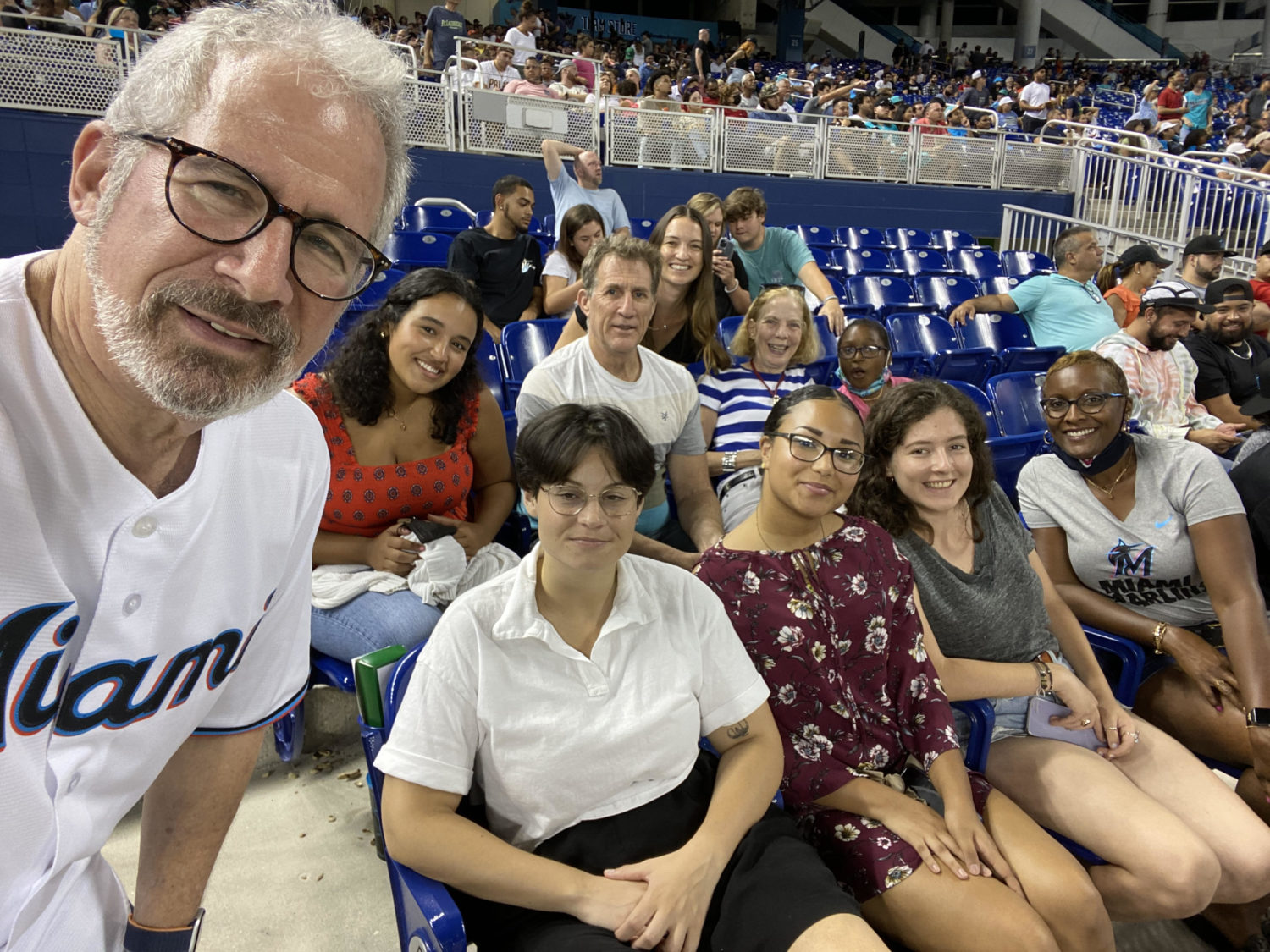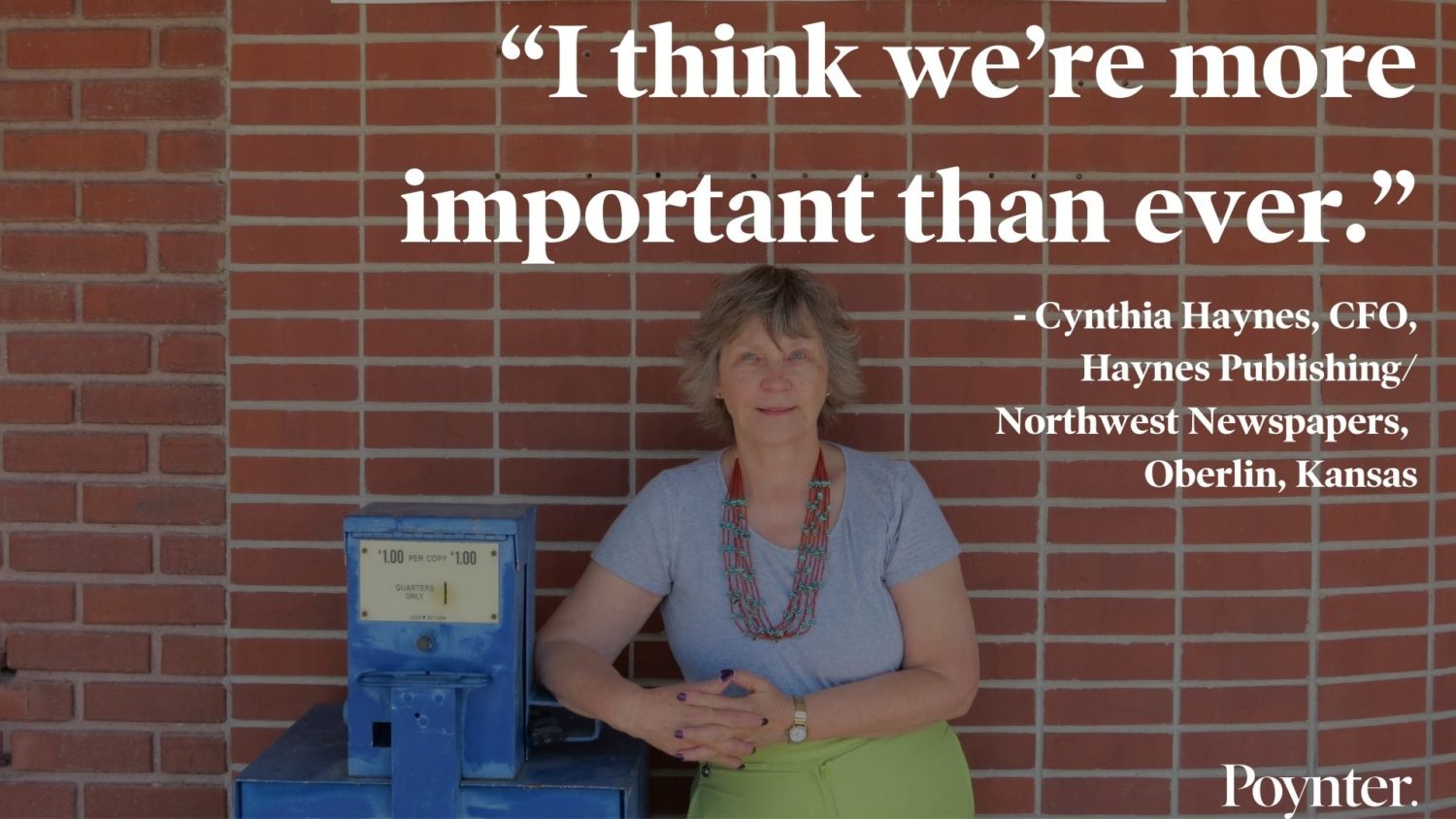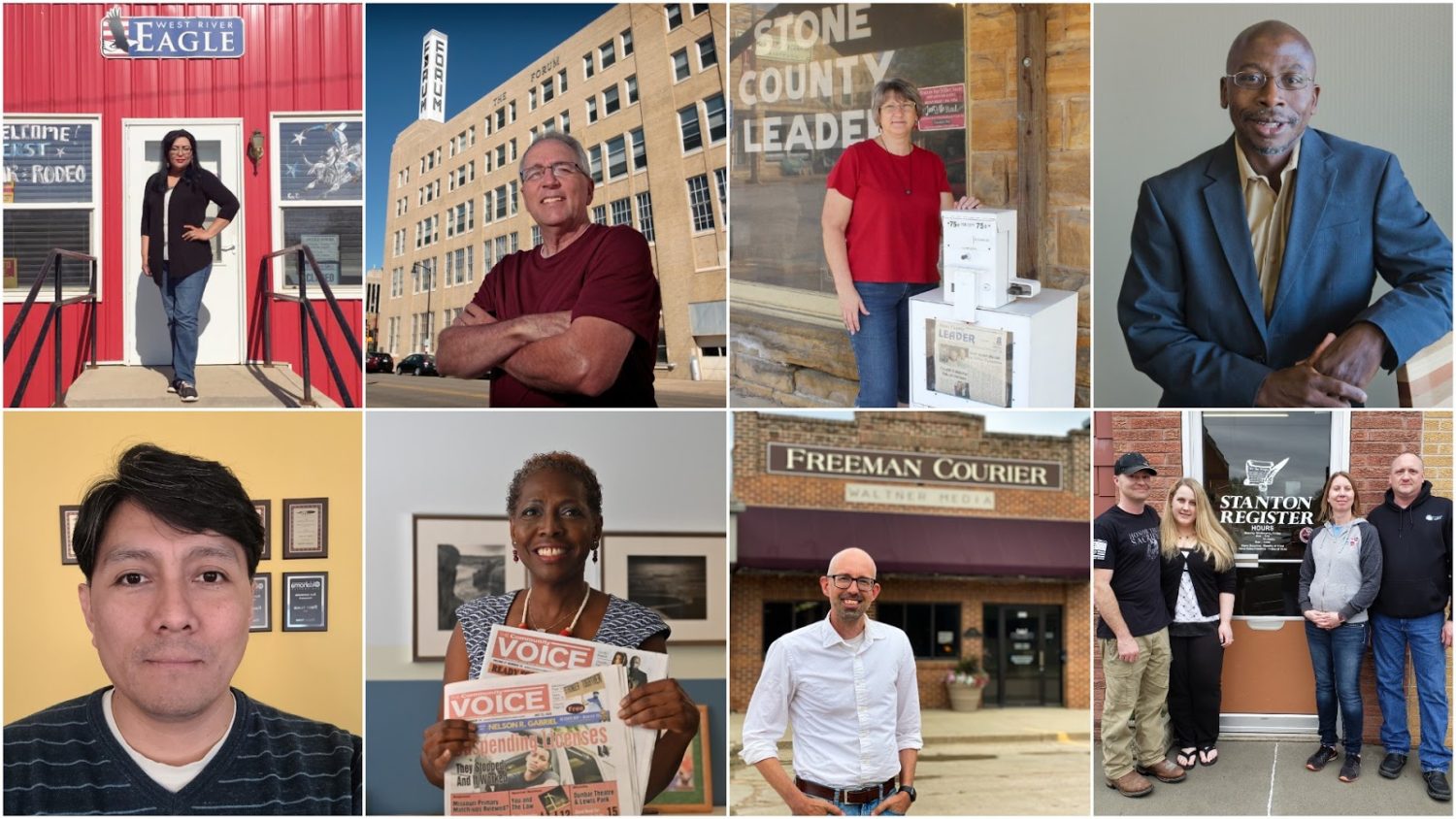I spent most of 2020 recording layoffs and closures. I did that in 2021, too, but there was a little more space to identify some of what local newsrooms and journalists were doing that worked.
Here are a few of my favorite stories from the year.

Image courtesy Los Angeles Times
The LAT built space for communities to remember with a digital Día de Muertos altar
Three journalists at the Los Angeles Times created a digital space for their community that normally exists only in the physical world — a virtual Día de Muertos altar.
Fidel Martinez, Martina Ibáñez-Baldor and Vanessa Martínez “wanted to digitize the feeling that you get while visiting one of these altars,” Martinez said.
They hoped to get about 50 submissions. They got more than 1,000.
One lesson from the project: “You can do cool things for audiences and they’ll respond.”

Monica Richardson, right corner, is executive editor of the Miami Herald. She and her daughter recently attended a Marlins game with Herald interns and staffers. (Courtesy: Monica Richardson)
The Miami Herald’s Monica Richardson on a different way to think about your career
Monica Richardson became the executive editor of the Miami Herald and El Nuevo Herald this year. When we caught up, she shared this story:
While covering education at The Florida Times-Union, Richardson wanted to sit with the copy desk and learn different aspects of how the paper worked.
“And they said to me, ‘We’re not ready for you to do that yet.’ I remember thinking, it’s not what you’re ready for me to do, it’s what I’m ready for me to do.”
“I had this moment of realization that my career belonged to me.”

Image via WAMU/DCist
Let’s eat cicadas and other ways to make the most of what people are talking about
WAMU and DCist made the most (the very most) of the great cicada invasion of 2021 with a virtual, cicada-themed event. It included science, music, and a cicada cooking demo. About 1,200 people registered and 536 attended live. The event brought in $1,538 from 74 donors, but revenue wasn’t the point, said Yanlin Zhang, WAMU event coordinator.
“This is a little bit of joy,” she said. “This is a little bit of something other than a very challenging time that people have been experiencing.”
It was also a little bit of (look away now if you’re squeamish) crunch with those cicada spring rolls.

Cherry The Party Tomato and friends. (Image: Southern California News Group)
Don’t give your audience tomatoes, teach your audience to grow tomatoes
Vanessa Franko has helped create some cool newsletters — there’s one on theme parks, one on festivals, and one area casinos.
Franko is digital director of entertainment and features at Southern California News Group, which includes The Orange County Register. Last spring brought Garden Party, an eight-week course on growing tomatoes. It had a whopping 55% open rate (MailChimp reported that the average open rate across industries was 21.33%.)
Franko and reporter Alex Groves shared these tips for trying a self-contained newsletter experiment:
-
Follow the analytics to tell you what people are interested in and what might make a good course, Groves said.
-
Map it out ahead of time, they both recommended.
-
Give yourself time for reporting and editing. It’s more time-consuming than Franko thought.
-
Listen to your audience. “We set up questions to encourage reader engagement in the welcome letter but those also helped us know more about our audience (novices, longtime gardeners, what kinds of tomatoes they were planting, etc.) and it worked as another check to make sure we addressed what they wanted to get out of the email,” Franko said. “We’re also using a survey from users who complete the course to see if there are any things we can tweak to make it an even better resource for people still going through it.”

Innovation isn’t just about tech and other lessons from journalists in mid-America
If you just scanned headlines, including those at Poynter, 2020 was a year of total destruction for local news. But two journalism professors conducted an extensive oral history project with newsrooms in seven states — North Dakota, South Dakota, Nebraska, Kansas, Oklahoma, Arkansas and Louisiana.
Here’s one of the things that struck me from their project, which I shared in a previous edition of Local Edition:
Innovation isn’t just about technology. Michael Smith, a reporter at The Daily Ardmoreite in Ardmore, Oklahoma, taught himself to cover the health beat. The Daily Record in Little Rock, Arkansas, built expertise in the Paycheck Protection Program to help small businesses, said publisher Wes Brown. And in North Dakota, Jill Friesz, pictured below, traveled 14 miles to a nearby lake community, where she’d walk a 10-mile route delivering papers and offering summer subscriptions to grow readership.
This piece originally appeared in Local Edition, our newsletter devoted to the telling stories of local journalists







